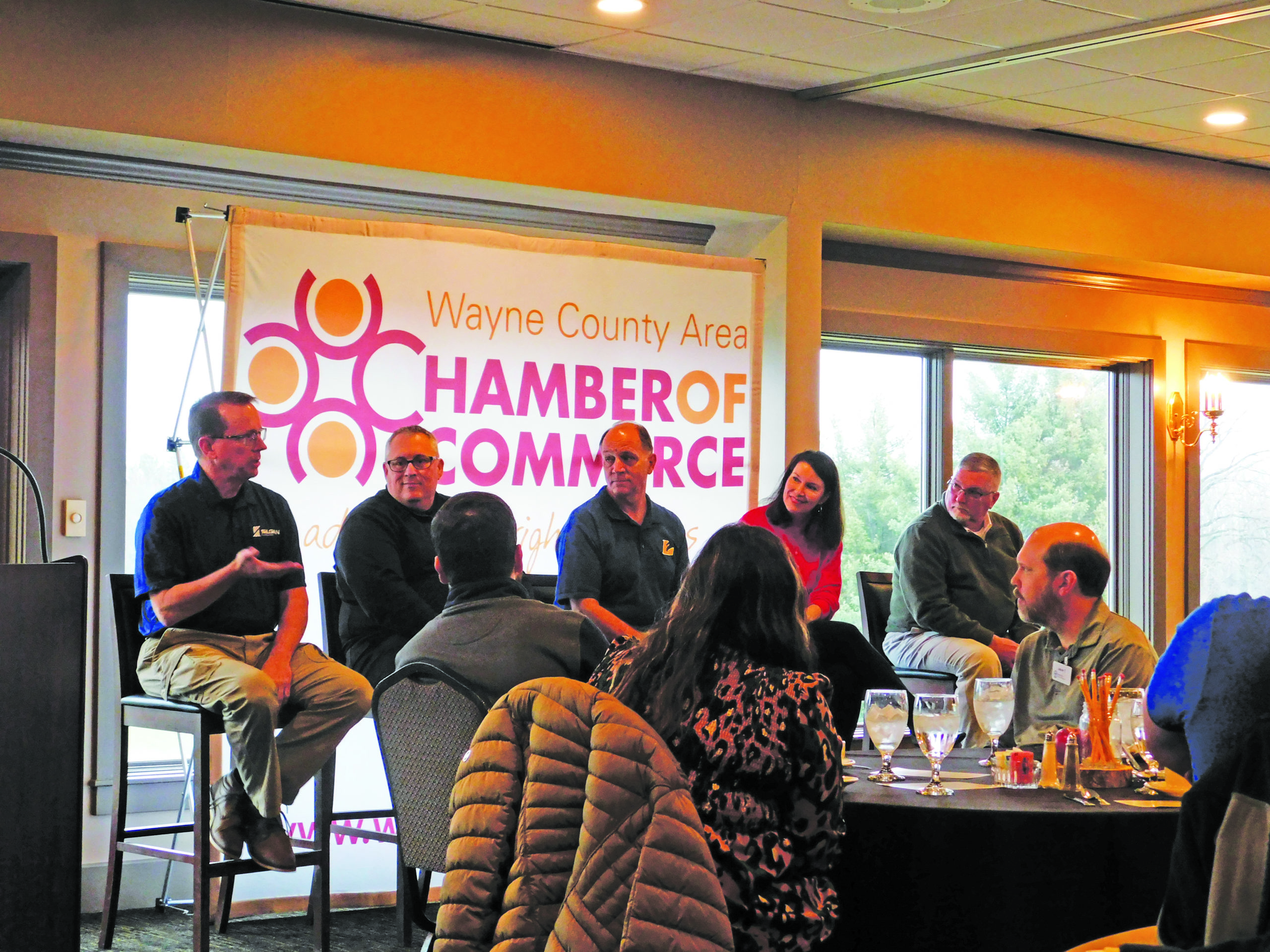Board members tout quality education in all 5 districts
Despite ongoing competitions for students and unique programs touted by each of Wayne County’s five public school districts, school board members generally agree that kids have great opportunities to learn at any of the county’s schools.
“We all work together on the same team, even though we’re at each other’s throats on Friday night,” said Nettle Creek’s Dan Davis Jr., referring to intracounty athletic contests. “It’s a beautiful thing.”
They also acknowledge that many of the districts’ growth opportunities are negatively affected by broad community challenges, such as a lack of available and affordable housing.
A representative from each board participated in a Friday panel discussion through Wayne County Area Chamber of Commerce’s Legislative Series, bringing some of those issues to light.
Chamber President and CEO Melissa Vance said the event aimed to cover what’s happening in local schools, each district’s direction, how they align, and how they could potentially work together.
Additional panelists were Brad Lambright of Centerville-Abington, Alan Austin of Western Wayne, Nicole Stults of Richmond Community Schools and Keith Webster of Northeastern Wayne.
All members proudly noted their districts are working to offer various career pathways, in-school opportunities, internships and employer connections ranging from manufacturing to healthcare, agriculture and entrepreneurship. They believe those opportunities will help retain new graduates and fill local workforce needs rather than awaiting the possibility of alumni returning years later.
The quintet discussed merits and concerns for several education bills being debated in the Indiana General Assembly as well as overall challenges their districts face.
Housing
Affordable housing is a key concern, especially when open enrollment is available around the county.
Austin said that more homes are needed to attract young families, but there’s a lack of available land to build on in Western Wayne. Even when available, most area families can’t afford to build houses costing $250,000 to $300,000 that appeal to developers, he said.
Webster noted Northeastern’s last major subdivision was built 60 years ago during school consolidation, and he’d like to see a couple more subdivisions instead of the solar farms being installed. When properties go on the market, he said they often are purchased by those not sending children to public schools.
Nettle Creek has about 200 students attending from outside its boundaries, which is a financial saving grace, but doesn’t solve local housing needs, Davis said.
School choice
Austin said open enrollment hurts rural schools and decreases community strength, and shouldn’t be permitted except in limited exceptions. When money’s tight, he said it doesn’t make sense for some districts to have open capacity and others to be building additions.
Austin said some families select schools based on perceived “green grass” values of other districts, even though several panelists said they’d send their children to any Wayne County public school.
Webster said he believes open enrollment is generally positive because it has “caused everyone to step up their game.”
Davis concurred that open enrollment benefits all kids through competition between districts. But he wants to ensure voters aren’t misled by the concept of school choice, which he knows can sound appealing to those who support freedom of choice generally, and encourages them to do their research.
School choice was designed to help students escape public schools with D or F letter grades by allowing them to attend private or charter schools with tax dollars, Davis said, but that doesn’t apply to many local schools.
Indiana hasn’t issued letter grades to schools since the pandemic began, and many of the district’s last grades were As and Bs. In 2020, four of Wayne County’s 21 public school buildings received Ds and 1 received an F, generally where the county’s highest poverty rates can be found.
Proposed education legislation
Davis said proposed educational savings accounts would put a school voucher program on steroids. He believes more tax dollars would follow kids to private schools that can attract athletes and high performers without having to follow the same rules or offer the same services as public schools. He said private schools should have to follow civil rights legislation if they accept public money, citing the case of a Roncalli High School guidance counselor who was fired over her same-sex marriage while the school accepted $1.3 million in taxpayer money.
Davis also expressed concern over House Bill 1449, which would automatically connect some students with potential scholarship and tuition dollars, but that might place a paperwork burden on guidance counselors.
All of the districts said they would welcome more resources for preschool and having more children qualify for support. HB 1393 would raise the income eligibility limit for grants under the On My Way Pre-K program from 127% to 185% of the federal poverty level.
Webster lived outside Wayne County early in his kids’ upbringing, and his family saw how much early instruction benefited every child. He said they took pre-K being available everywhere for granted. “I think it’s a no-brainer that we fund these things and get kids started off in the right direction,” Webster said.
Davis said Nettle Creek’s preschool must be self-sustainin. Some children who would most need that instruction aren’t being reached.
Residential broadband access
Board members also addressed continuing challenges in students’ home internet access that became apparent during the pandemic. Davis said that while they learned that need is now a part of life, remote learning re-emphasized the value of face-to-face instruction.
Stults agrees in-person schooling is ideal, but sees technology facilitating appealing new options to reach students with social-emotional issues such as anxiety or feeling bullied.
Panelists concurred that their partnerships with Centerstone, Meridian and Communities in Schools are helping districts address students’ mental health concerns or other barriers to learning. Davis said Nettle Creek couldn’t afford to hire people in-house to meet those needs.
“We don’t have to travel to an inner city far away to see neglect, abuse and general poor living conditions,” Webster said.

